News Archive
Filter By
- Abyssinian ground hornbill
- Addax
- Aldabra tortoise
- Allen's swamp monkey
- Alpaca
- American alligator
- American avocet
- American bison
- American flamingo
- American wigeon
- Andean bear
- Aquatic caecilian
- Arapaima
- Asian elephant
- Asian small-clawed otter
- Asian water dragon
- Australian snake-necked turtle
- Bald eagle
- Baltimore oriole
- Barred owl
- Bearded emperor tamarin
- Beaver
- Bennett's wallaby
- Binturong
- Black-and-white ruffed lemur
- Black-crowned night heron
- Black-footed ferret
- Black-tailed prairie dog
- Black-throated blue warbler
- Blue-billed curassow
- Blue crane
- Bobcat
- Brown pelican
- Bufflehead
- California sea lion
- Canvasback
- Cedar waxwing
- Channel catfish
- Cheetah
- Chicken
- Chinese alligator
- Chinese three-striped box turtle
- Clouded leopard
- Collared brown lemur
- Common raven
- Common yellowthroat
- Corals and sea anemones (anthozoa)
- Cow
- Crocodile monitor
- Cuban crocodile
- Dama gazelle
- Degu
- Dunlin
- Eastern corn snake
- Eastern indigo snake
- Eastern newt
- Eastern red-backed salamander
- Eastern screech-owl
- Eld's deer
- Electric eel
- Emperor newt
- Fennec fox
- Fishing cat
- Gaboon viper
- Geoffroy's marmoset
- Gharial
- Giant leaf-tailed gecko
- Giant panda
- Goat
- Golden-headed lion tamarin
- Golden lion tamarin
- Gray seal
- Gray wolf
- Green tree python
- Grevy's zebra
- Guam kingfisher (sihek)
- Guam rail (ko’ko’)
- Guinea pig
- Harbor seal
- Hartmann's mountain zebra
- Hawk-headed parrot
- Hellbender
- Home's hinge-back tortoise
- Hooded crane
- Iranian fat-tailed gecko
- Japanese giant salamander
- King vulture
- Komodo dragon
- Kori bustard
- Kunekune pig
- Land hermit crab
- Larger Malay mouse-deer
- Lemur leaf frog
- Lesser hedgehog tenrec
- Lesser kudu
- Lion
- Loggerhead shrike
- Long-tailed chinchilla
- Long-tailed salamander
- Maned wolf
- Meerkat
- Miniature donkey
- Naked mole-rat
- North American porcupine
- North American river otter
- Northern Luzon giant cloud rat
- Northern pine snake
- Northern pintail
- Northern red salamander
- Northern shoveler
- Northern snakehead fish
- Northern tree shrew
- North Island brown kiwi
- Norway rat
- Orangutan
- Orchard oriole
- Ossabaw Island hog
- Ostrich
- Ovenbird
- Pallas's cat
- Panamanian golden frog
- Patagonian mara
- Persian onager
- Philippine crocodile
- Prehensile-tailed porcupine
- Prevost's squirrel
- Przewalski's horse
- Pygmy slow loris
- Red-crowned crane
- Red-fronted lemur
- Red-rumped agouti
- Red-winged blackbird
- Red knot
- Red panda
- Red River hog
- Red ruffed lemur
- Red wolf
- Ring-tailed lemur
- Ruddy duck
- Schmidt's red-tailed monkey
- Scimitar-horned oryx
- Screaming hairy armadillo
- Semipalmated plover
- Semipalmated sandpiper
- Siamang
- Sitatunga
- Sloth bear
- Southern lesser galago
- Southern swamp sparrow
- Southern tamandua
- Spider tortoise
- Striped skunk
- Tanagers
- Tentacled snake
- Tiger
- Titi monkey
- Turkey
- Twig catfish
- Two-toed sloth
- Vietnamese mossy frog
- Virginia opossum
- Von der Decken's hornbill
- Western lowland gorilla
- White-cheeked gibbon
- White-faced saki
- White-naped crane
- White-nosed coati
- Whooping crane
Displaying 876 - 900 of 2401 articles.

Chinese Railway Underpass Prolongs Tibetan Antelope’s Migration ›
In a rural area of west China, the highest railroad on earth transports visitors from Qinghai to Tibet (QTR).
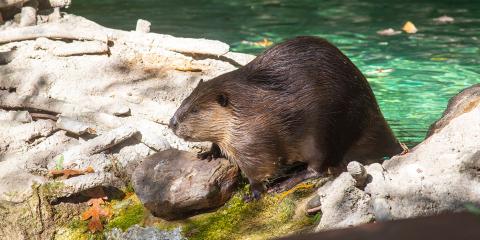
8 Facts to Celebrate International Beaver Day ›
April 7 is International Beaver Day, so sink your (orange) teeth into these fun beaver facts!
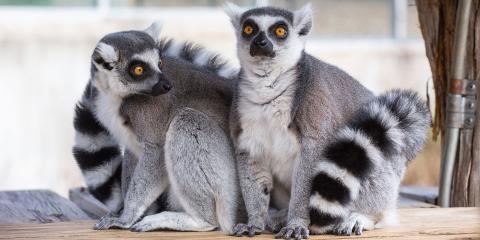
Featured Creature: Meet the Lemurs ›
Lemurs like to do more than move it, move it. At the Smithsonian’s National Zoo, these primates party! Every April, animal keepers throw a big birthday bash for the Zoo’s ring-tailed lemurs, black-and-white ruffed lemurs and red-fronted lemur to raise awareness about these critically endangered...

New at the Zoo: North American River Otter Pups ›
The Smithsonian’s National Zoo is otterly delighted to introduce Coquille, Potomac and Nash — American Trail’s adorable North American river otter pups! Get the latest news in this PUPdate.
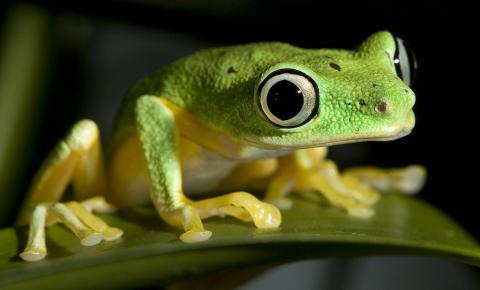
Rewriting Frogs’ Future with Science ›
Stories about amphibians don’t always end with “happily ever after,” but scientists around the globe, including Brian Gratwicke at the Smithsonian Conservation Biology Institute, are working together to rewrite frogs’ fate.

Spring 2019 Community Newsletter ›
Springtime at the Smithsonian’s National Zoo and Conservation Biology Institute has arrived, and we are looking forward to warmer weather, longer days and many exciting events.
Spring Events at Smithsonian’s National Zoo ›
See a list of events being held at the Smithsonian’s National Zoo from April through the beginning of June 2019.
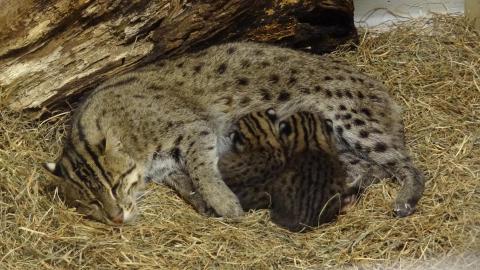
Fishing Cat Study Looks to Improve Breeding Success Rates ›
Fishing cats are vulnerable in the wild across South and Southeast Asia, and sightings by scientists are few and far between. Not many of these small spotted cats live in zoos either, which could spell trouble for the entire species.
Giant Panda Mei Xiang Is Artificially Inseminated at the Smithsonian’s National Zoo ›
A team of reproductive scientists, veterinarians and panda keepers at the Smithsonian’s National Zoo and Conservation Biology Institute performed an artificial insemination on giant panda Mei Xiang (may-SHONG) March 28.
Mass Amphibian Extinctions Globally Caused By Fungal Disease ›
An international study led by The Australian National University (ANU) has found that a fungal disease has caused dramatic population declines in at least 501 amphibian species, including 90 extinctions, over the past 50 years.

#GorillaStory: The Troop is Back Together! ›
Get the scoop on the reunion between western lowland gorilla infant Moke and his troop from Becky Malinsky, assistant curator of Primates.
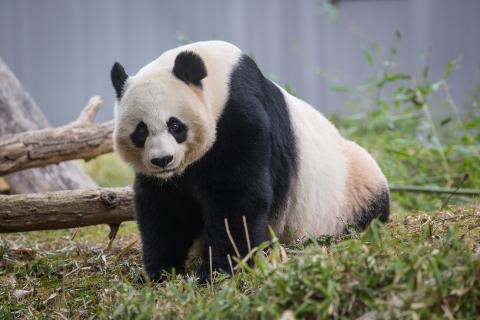
Mei Xiang Showing Signs of Estrus ›
On March 15, Mei Xiang started exhibiting behavioral signs that breeding season is approaching!
Wallaby Joey Born at Smithsonian’s National Zoo ›
A wallaby popped its head out of its mother’s pouch last week at the Smithsonian’s National Zoo.
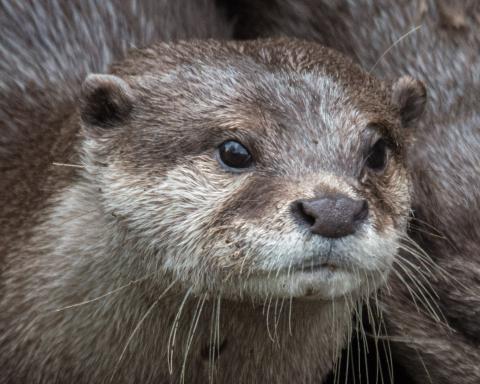
Asian Small-Clawed Otter Dies at Smithsonian’s National Zoo ›
Asia Trail keepers at the Smithsonian’s National Zoo are mourning the loss of Peaches, a 7-year-old female Asian small-clawed otter who was humanely euthanized March 11. Over the past eight months, animal care staff had been treating Peaches for a cancerous mass.

Perimeter Fencing Update and Pedestrian Safety ›
On March 7, 2019, the Smithsonian's National Zoo received combined preliminary and final approval from the National Capital Planning Commission for its perimeter fencing plan focused on improving pedestrian safety.
Second Kiwi Chick Hatches at Smithsonian Conservation Biology Institute This Year ›
A female brown kiwi chick hatched at the Smithsonian Conservation Biology Institute (SCBI) Feb. 3 and is thriving after initially requiring veterinary care. The chick had difficulty hatching, and her legs appeared to be weak.
Three Animals Die at Smithsonian Conservation Biology Institute ›
A scimitar-horned oryx, an elderly whooping crane and an Eld’s deer died at the Smithsonian Conservation Biology Institute (SCBI) between Feb. 23 and Feb. 26.
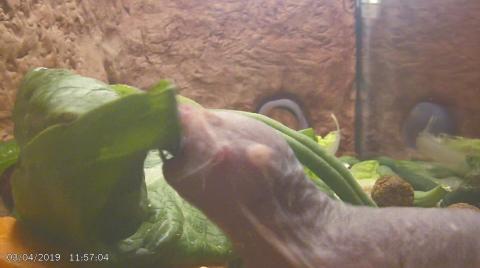
More Naked Mole-rat Pups May Be on the Way ›
There seems to be a favorite in the naked mole-rat colony.
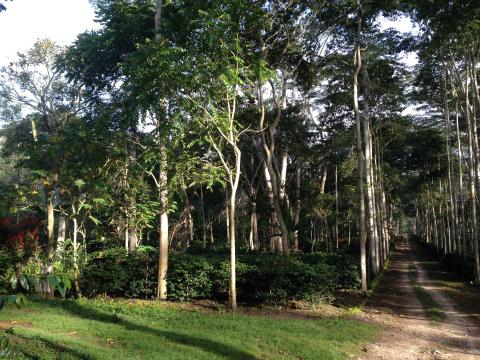
Proudly Serving Biodiversity: Meet Your Bird Friendly Coffee Grower ›
The coffee farm El Roble, nestled high above the Mesa de los Santos region of Colombia, has been in owner Oswaldo Acevedo’s family since 1840. He credits the beauty and ecological diversity of the estate to the Bird Friendly habitat his family created.
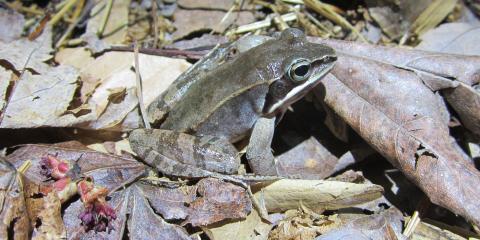
Genetics Discovery Could Help Protect Frogs from Disease ›
Smithsonian scientists and partners believe genetic diversity could hold the key to saving amphibians from Ranavirus, a pathogen that is particularly devastating to frogs and toads in the U.S.

8 Historic Photos of the Zoo to Celebrate Its 130th Anniversary ›
The Smithsonian’s National Zoo was created in 1889 and opened its doors in 1891. To celebrate its 130th anniversary, look back at how the Zoo has evolved through the years.

Exploring Peru’s Wilderness From the Air ›
What’s that in Peru’s sky? It’s a conservation drone! The new super hero of Peru has just arrived, and it is here to fight deforestation, safeguard ecosystem restoration and protect nature along with its Smithsonian Conservation Biology Institute scientist sidekicks.
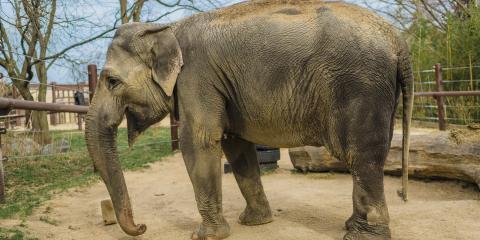
Training Swarna for Tooth Radiographs ›
When Asian elephant Swarna needed her teeth examined, animal keepers tried something that had never been done at the Zoo before. Over two months, they trained the 44-year-old elephant to voluntarily participate in dental radiographs!

New at the Zoo: Amur Tiger Nikita ›
A sassy new resident made her debut at the Smithsonian’s National Zoo this week! Animal care staff recently welcomed Amur tiger Nikita to the Great Cats exhibit. Get to know her in this Q&A.
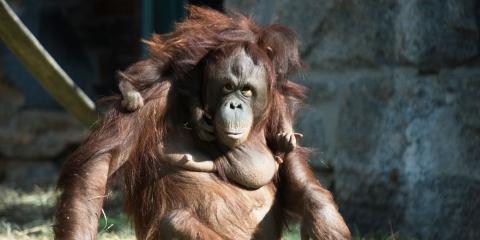
What Are Orangutans Thinking? ›
Let’s play a game…for science! With a tap of the touch-screen computer, orangutans at the Smithsonian’s National Zoo try their memories at matching pictures. These games help scientists study the apes’ metacognition.